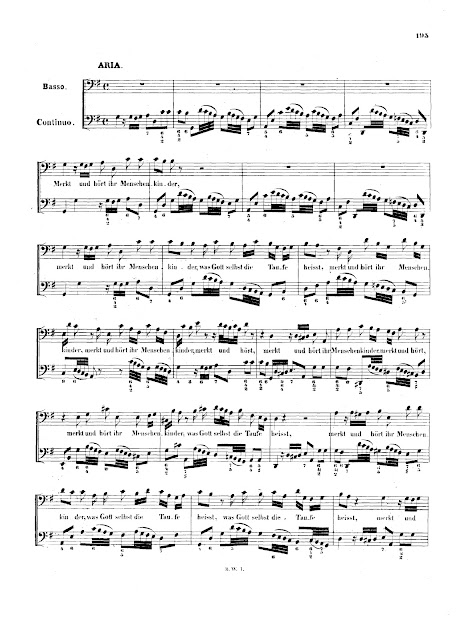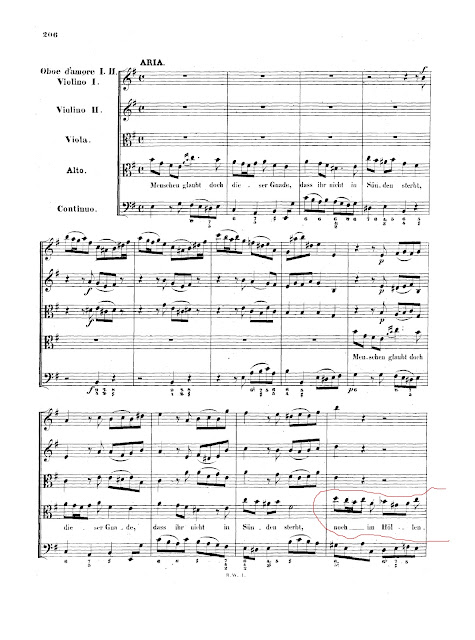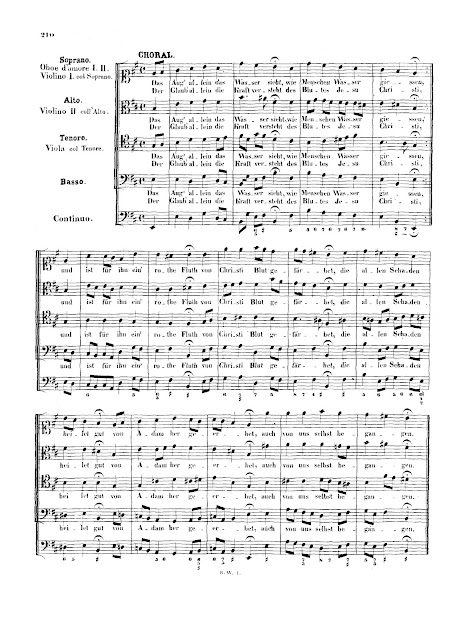CCCX. BACH, J.S. (1685-1750)
Martin Luther's 1541 hymn upon which the cantata is based:
1. [Coro]: Christ unser Herr zum Jordan kam
The cantus firmus is in the tenors (red arrow), with the other singers in free counterpoint. In addition, a concertante violin solo adorns the entire movement. Baptismal waves, perhaps?
This splendid bass aria is accompanied by continuo alone. Notice the five-note motif which always descends -- like water flowing down ...
3. Recitativo (Tenore): Dies hat Gott klar mit Worten
The tenor as Evangelist ...
4. Aria (Tenore): Des Vater Stimme ließ sich hören
Now accompanied by two solo violins; notice the melismas on the words erkauft (redeemed); getauft (baptised); Zweifel (doubt) ...

5. Recitativo (Basso): Als Jesus dort nach seinen Leiden
Now accompanied by two solo violins; notice the melismas on the words erkauft (redeemed); getauft (baptised); Zweifel (doubt) ...

and the recitative gets more complicated with an Andante string accompaniment, usually associated with Jesus's words:
6. Aria (Alto): Menschen glaubt doch dieser Gnade
Add two oboes. Notice how Bach cuts out all the accompaniment but the continuo on the line:
Noch im Höllenpfuhl verderbt! (Nor are destroyed in the pit of Hell)













No comments:
Post a Comment